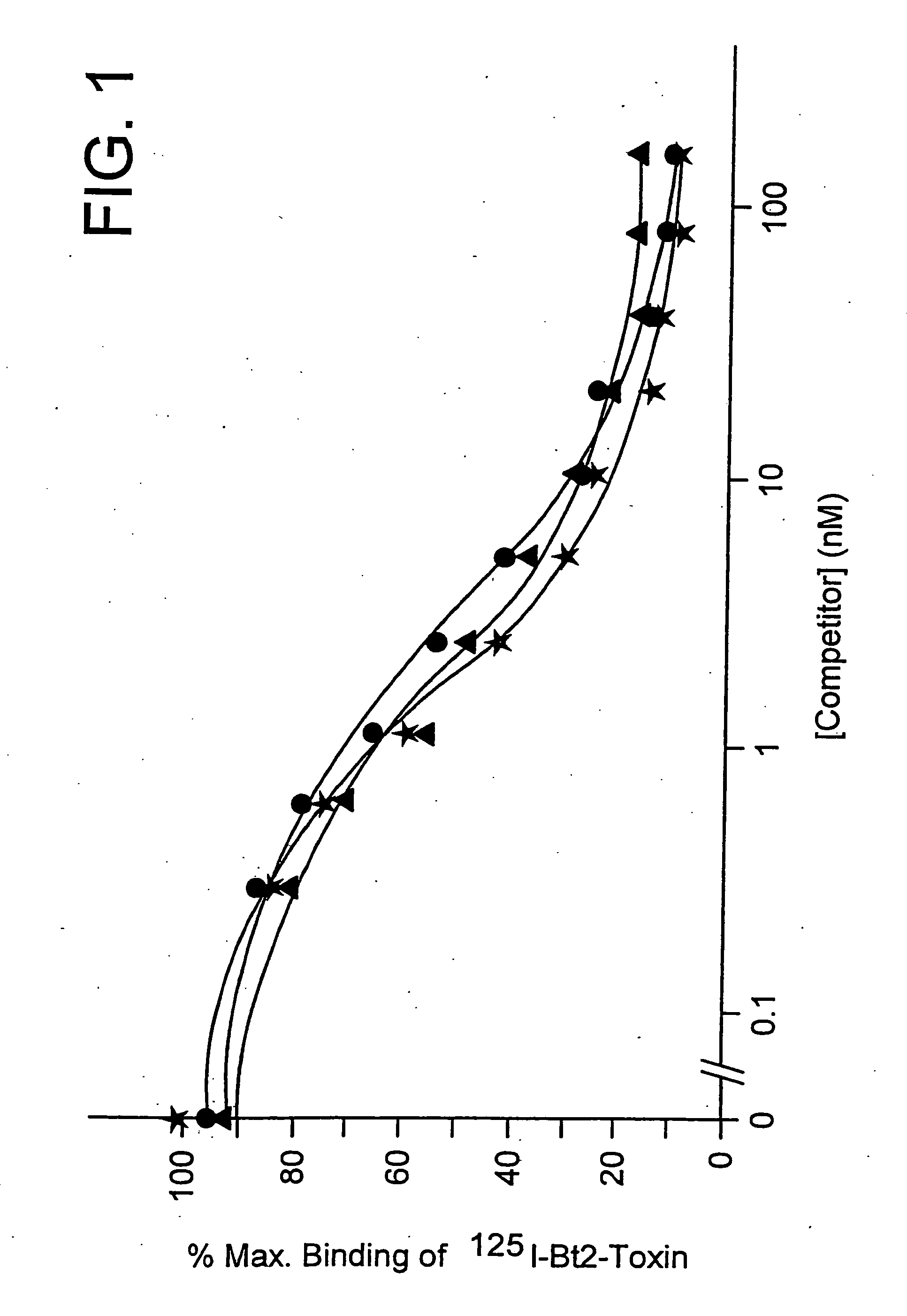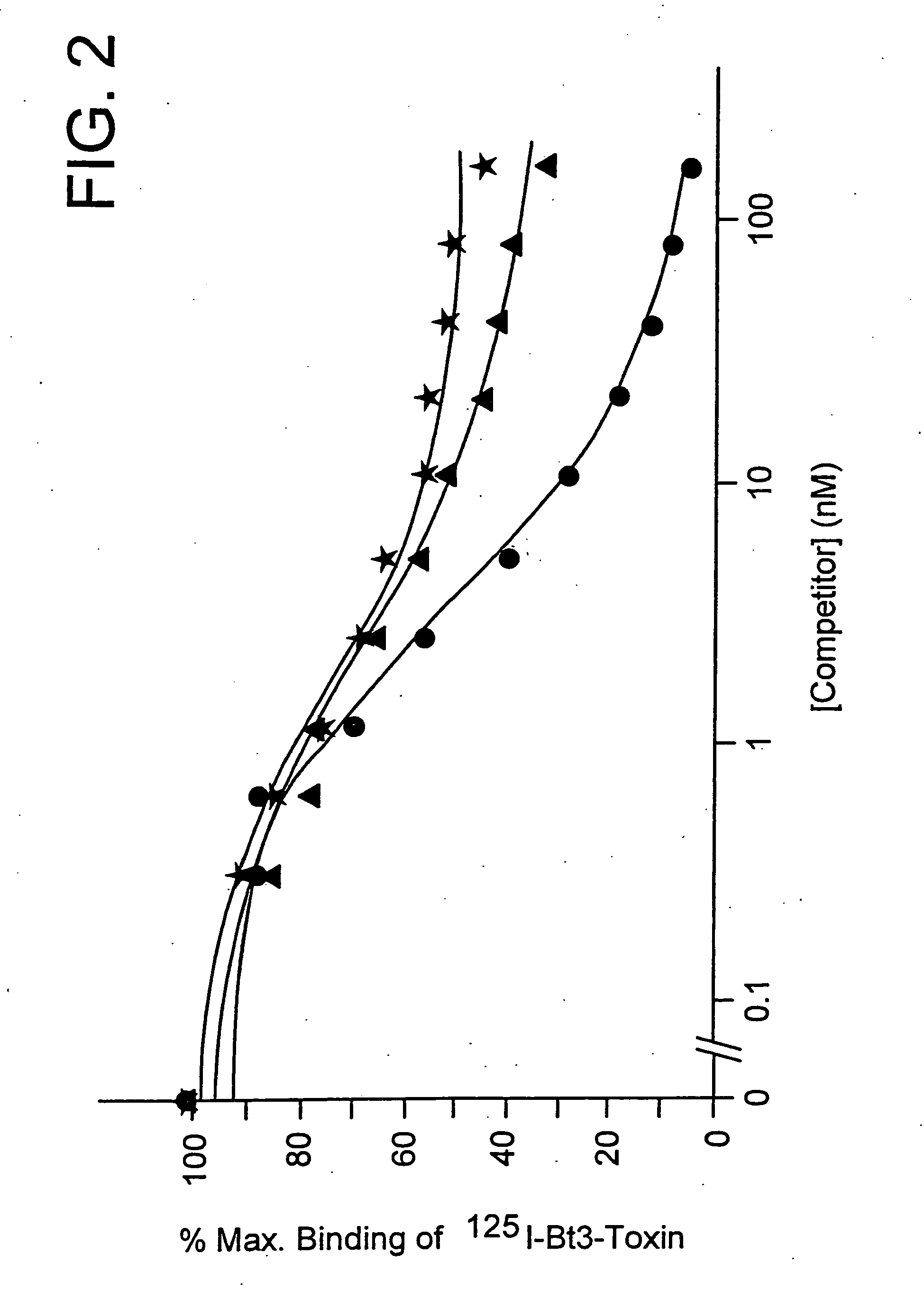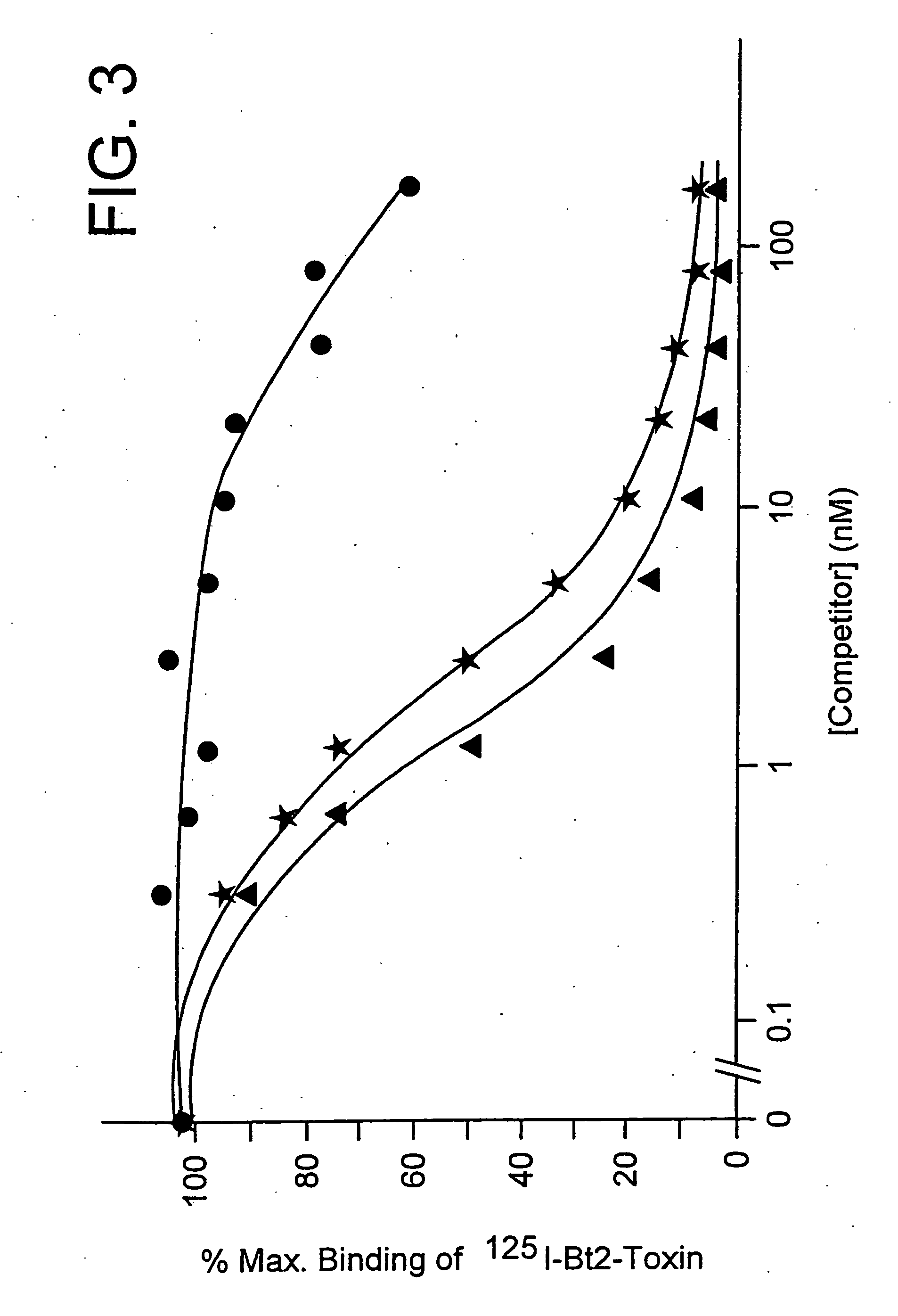Prevention of Bt resistance development
a technology of resistance and development, applied in the field of prevention of resistance development, can solve the problems of resistance loss, difficult to assess the monetary and human costs of resistance, and difficult to so as to improve resistance and prevent or delay the development of resistan
- Summary
- Abstract
- Description
- Claims
- Application Information
AI Technical Summary
Benefits of technology
Problems solved by technology
Method used
Image
Examples
example 1
Collection of Genes
[0086] The collection of anti-Lepidopteran and anti-Coleopteran Bt genes encoding ICPs, which are the subject of the Examples, is described in Table 2 (following the Examples). References for the respective genes are indicated in Table 2. The origin, the isolation and characterization of the Bt genes, which have not been published, are described below. Bt strains, such as strains HD-1, HD-68, HD-110, and HD-73, are publicly available from the Agricultural Research Culture Collection, Northern Regional Research Laboratory, U.S. Dept. of Agriculture, Peoria, Ill. 61604, U.S.A.
[0087] bt3
[0088] gene: From B. thuringiensis var. kurstaki HD-1, the ICP was cloned. Characterization of this gene revealed an open reading frame of 3528 bp which encodes a protoxin of 133 kDa. This gene was identical to the one described by Schnepf et al. (1985).
[0089] bt73
[0090] gene: From B. thuringiensis var HD-73. The ICP gene was cloned as described by Adang et al. (1985).
[0091] bt4...
example 2
Construction of Gene Cassettes and Expression of Bt genes in E. coli
[0105] 1) bt2, bt18: the construction of bt2 and bt18 gene cassettes has been previously described in EPA 86300291.1 and 88402241.9, respectively. Basically, they comprise a truncated gene encoding the toxic core and a hybrid gene comprising the truncated gene fused in frame to the N-terminus of the neo gene. The gene cassettes are used to transform E. coli to express the Bt2 and Bt18 ICP toxins.
[0106] 2) bt14, bt15: as described in EPA 88402241.9, gene cassettes for the bt14 and bt15 genes were constructed in order to express the genes in E. coli and in plants.
[0107] First, a NcoI site was introduced at the N-terminus of the genes by site-directed mutagenesis.
[0108] In the case of the bt15 gene, the conversion of the TT nucleotides, immediately in front of the ATG codon, into CC yielded a NcoI site overlapping with the ATG initiation codon. This site was introduced using the pMa / c vectors for site-directed muta...
example 3
Purification of Recombinant ICPs
[0117] The ICPs expressed in E. coli in Example 2 are purified by the method (described for recombinant Bt2 protoxin) by Hofte et al. (1986).
PUM
| Property | Measurement | Unit |
|---|---|---|
| molecular weight | aaaaa | aaaaa |
| dissociation constant | aaaaa | aaaaa |
| pH | aaaaa | aaaaa |
Abstract
Description
Claims
Application Information
 Login to View More
Login to View More - R&D
- Intellectual Property
- Life Sciences
- Materials
- Tech Scout
- Unparalleled Data Quality
- Higher Quality Content
- 60% Fewer Hallucinations
Browse by: Latest US Patents, China's latest patents, Technical Efficacy Thesaurus, Application Domain, Technology Topic, Popular Technical Reports.
© 2025 PatSnap. All rights reserved.Legal|Privacy policy|Modern Slavery Act Transparency Statement|Sitemap|About US| Contact US: help@patsnap.com



